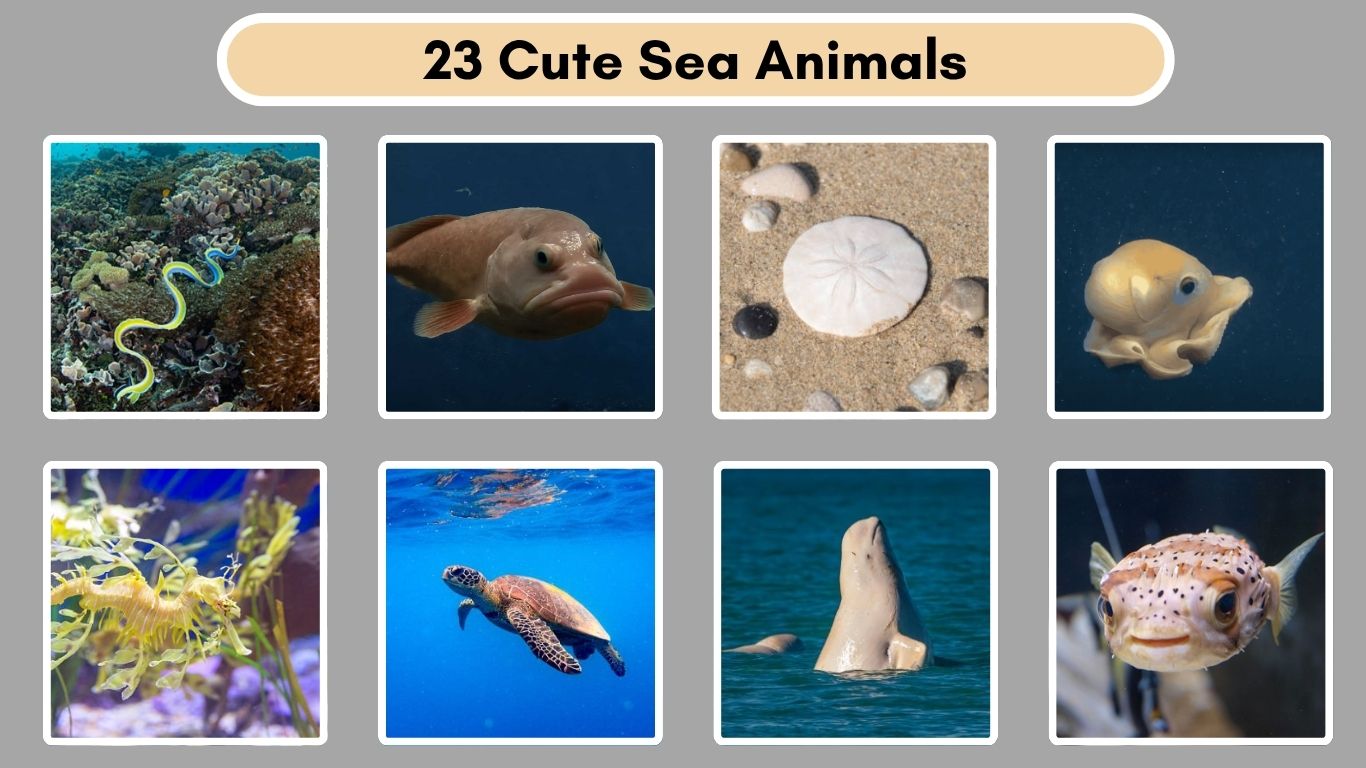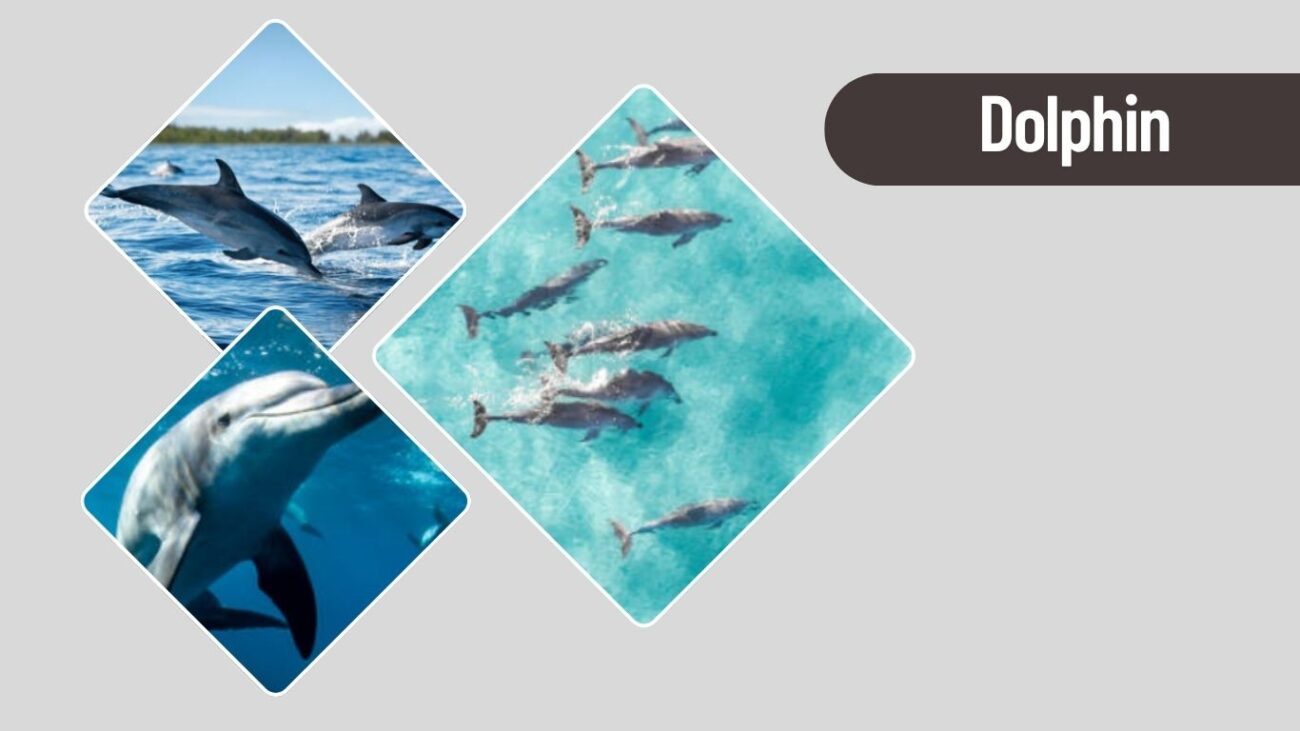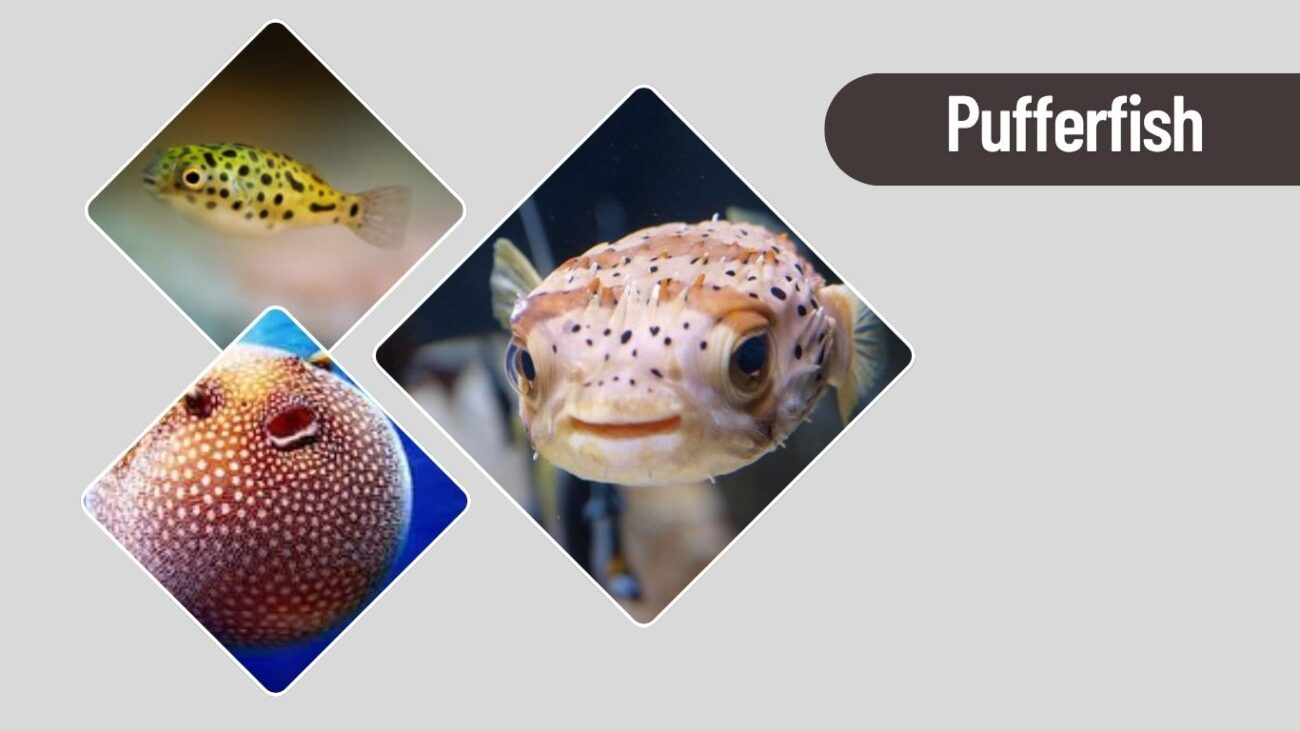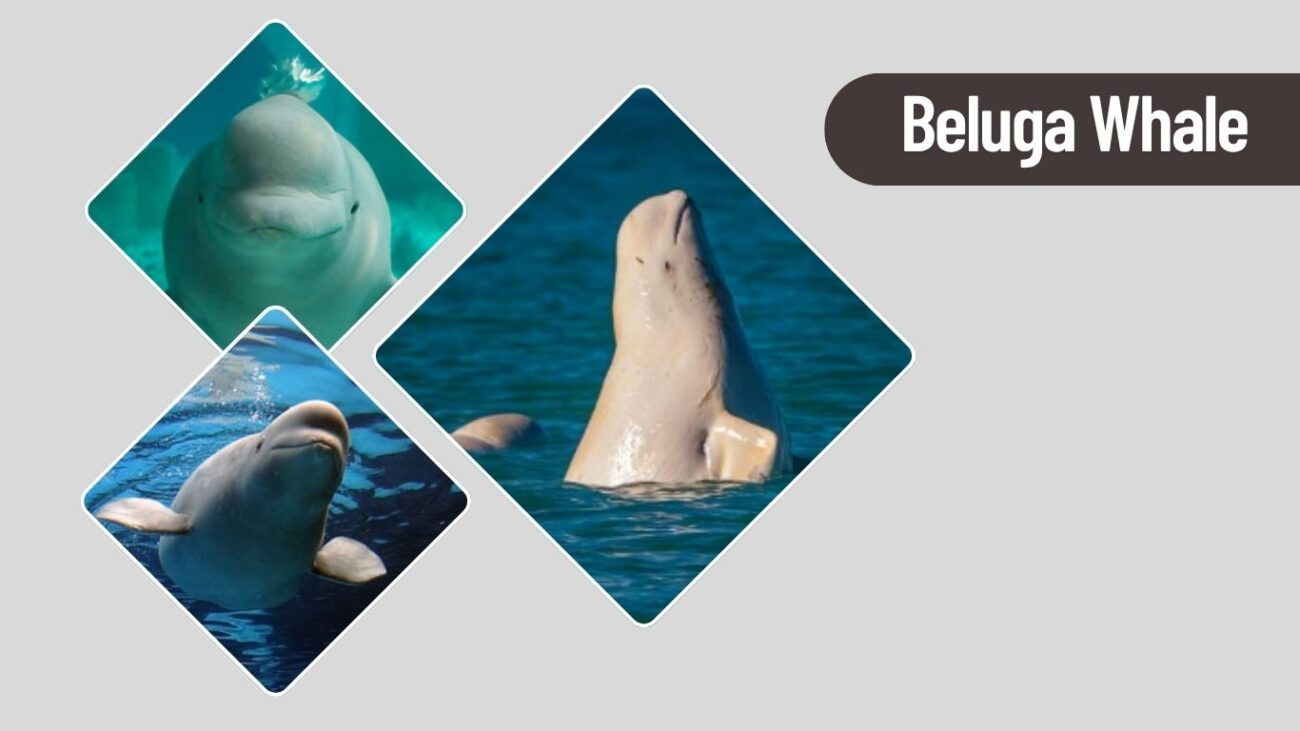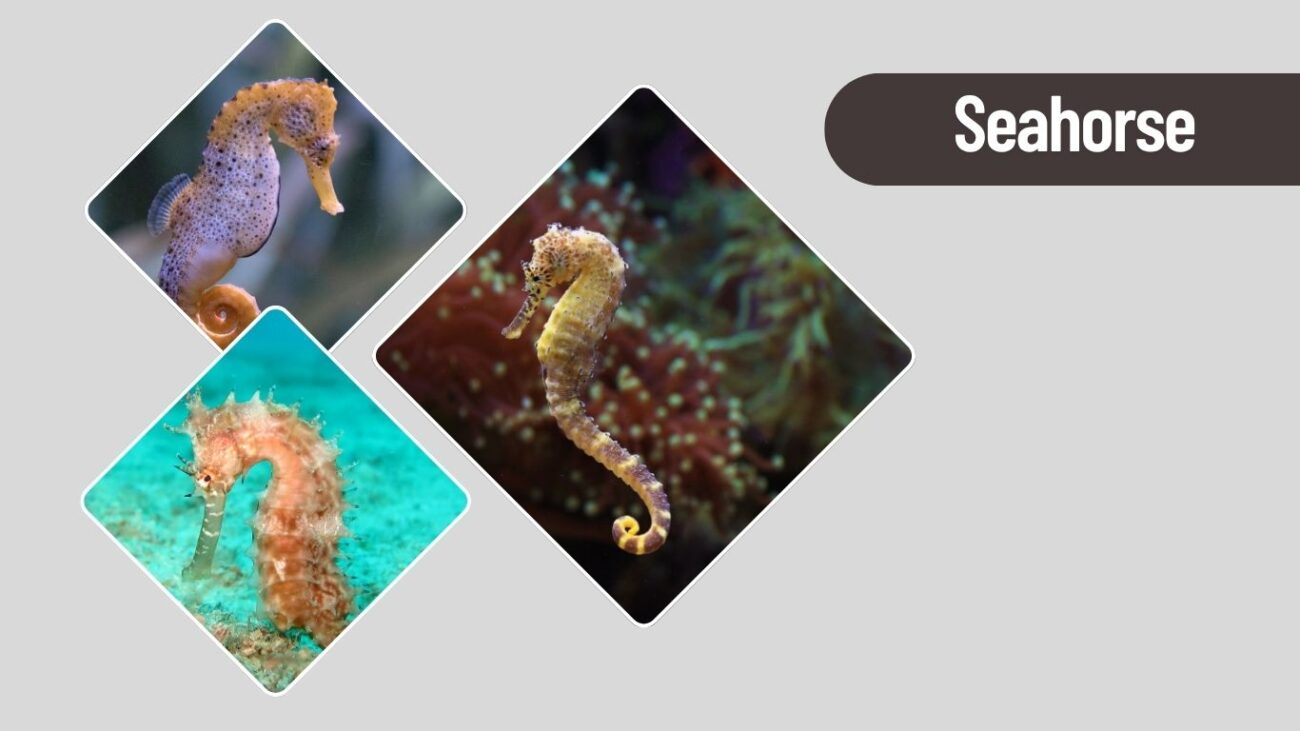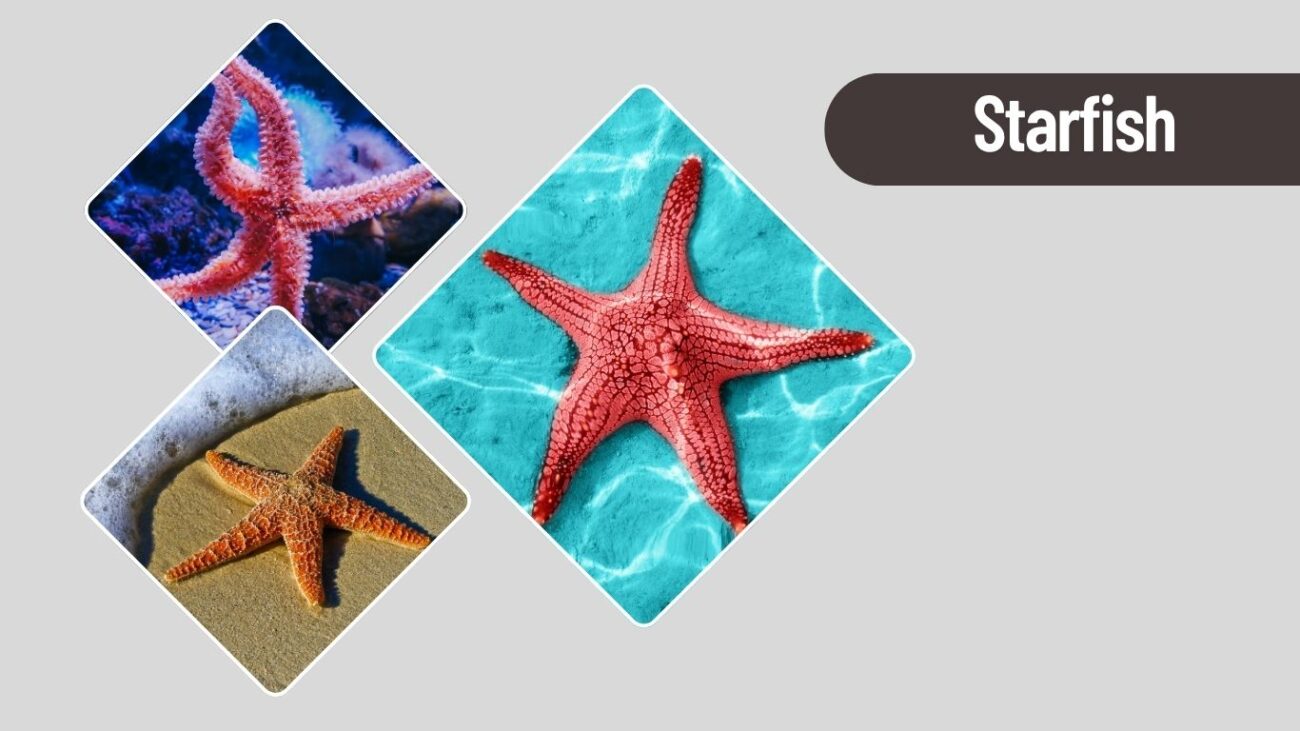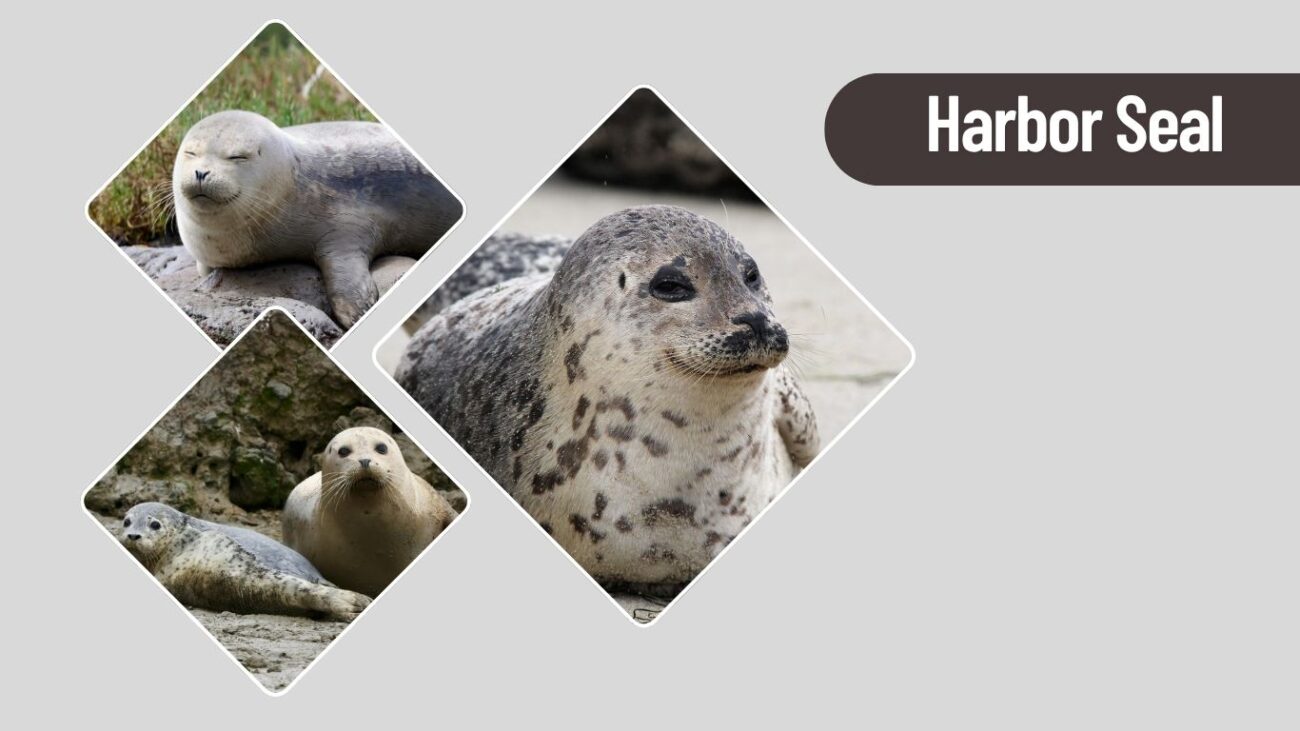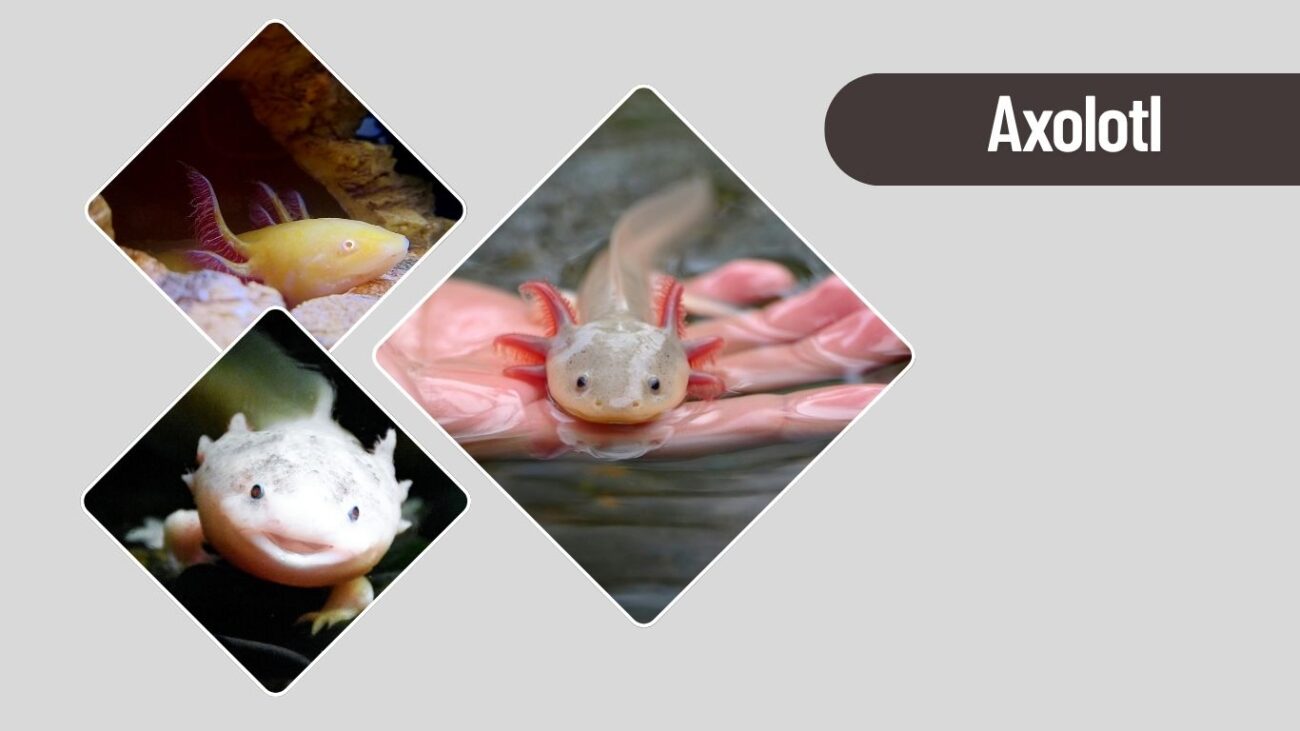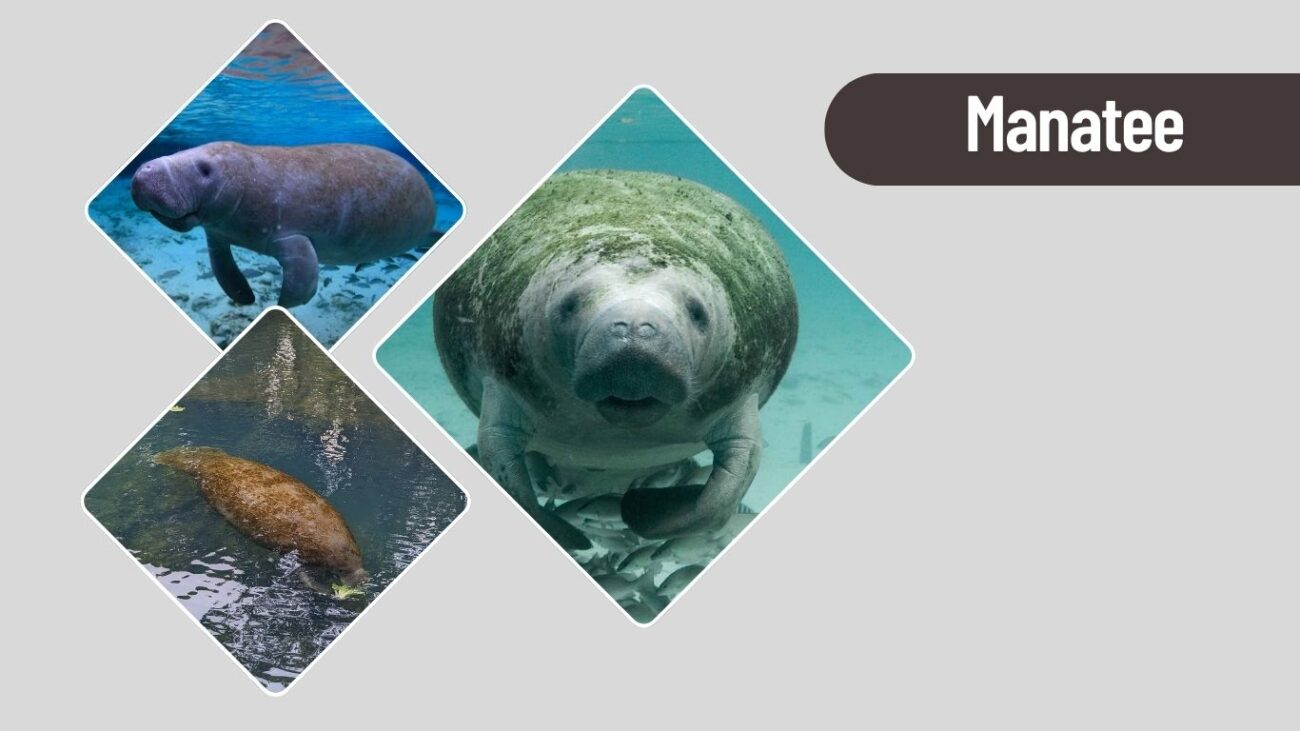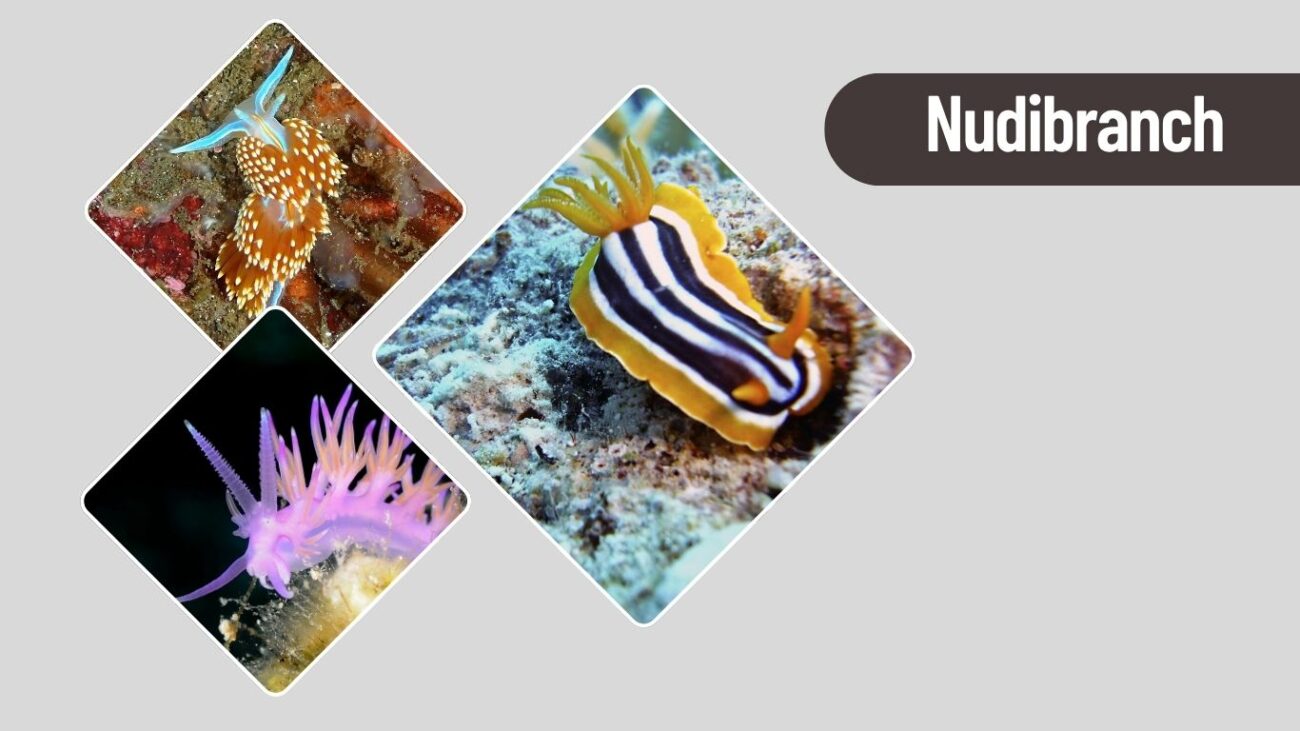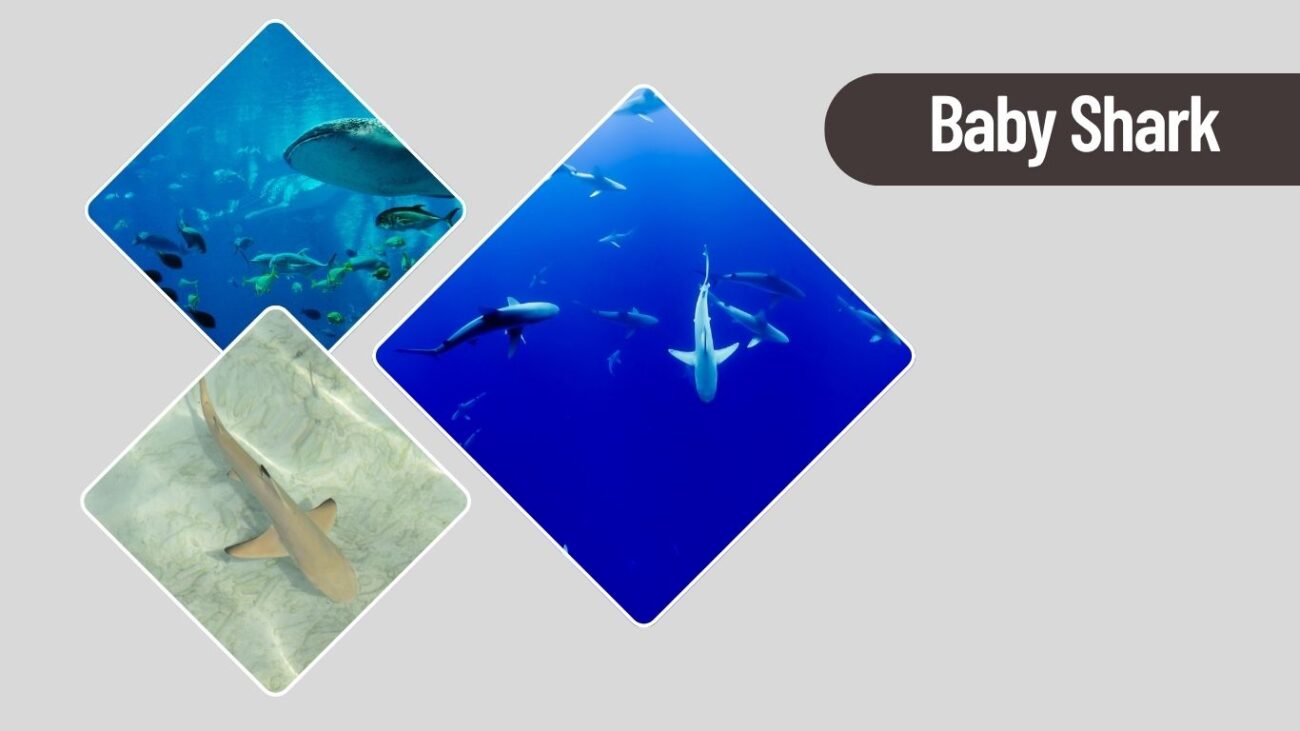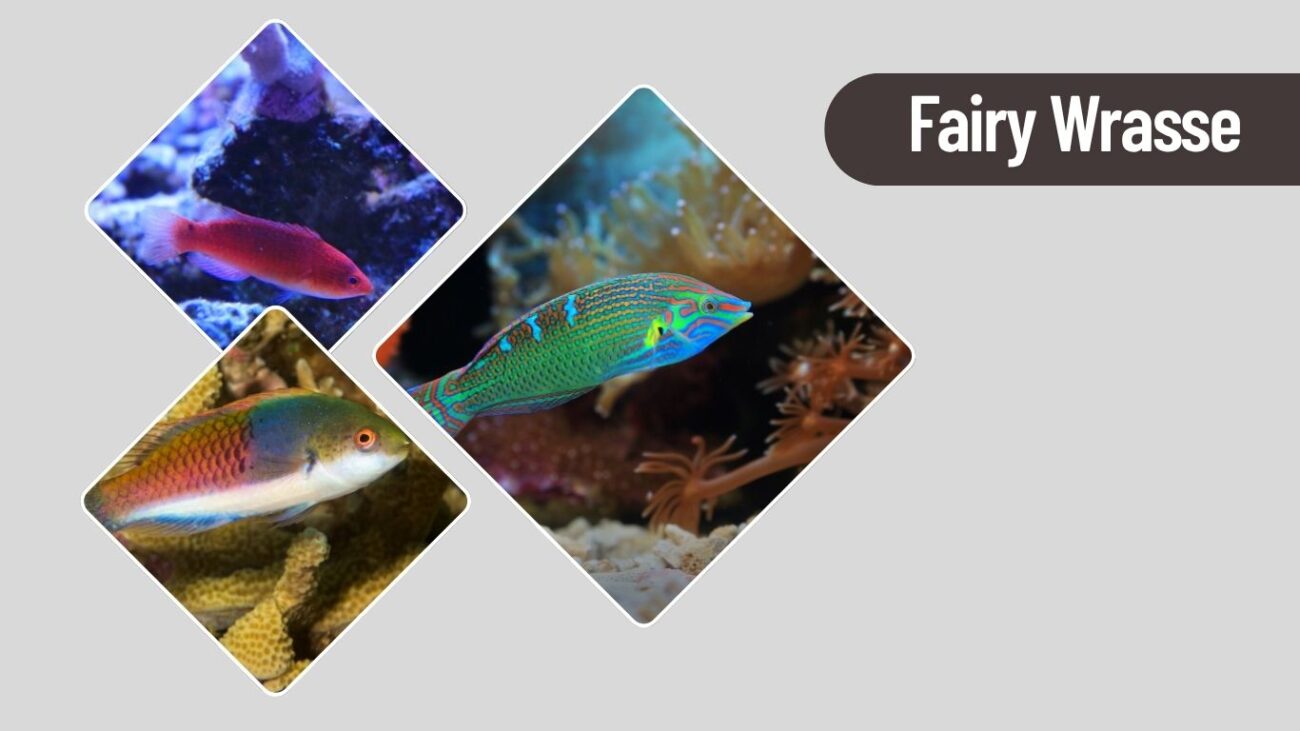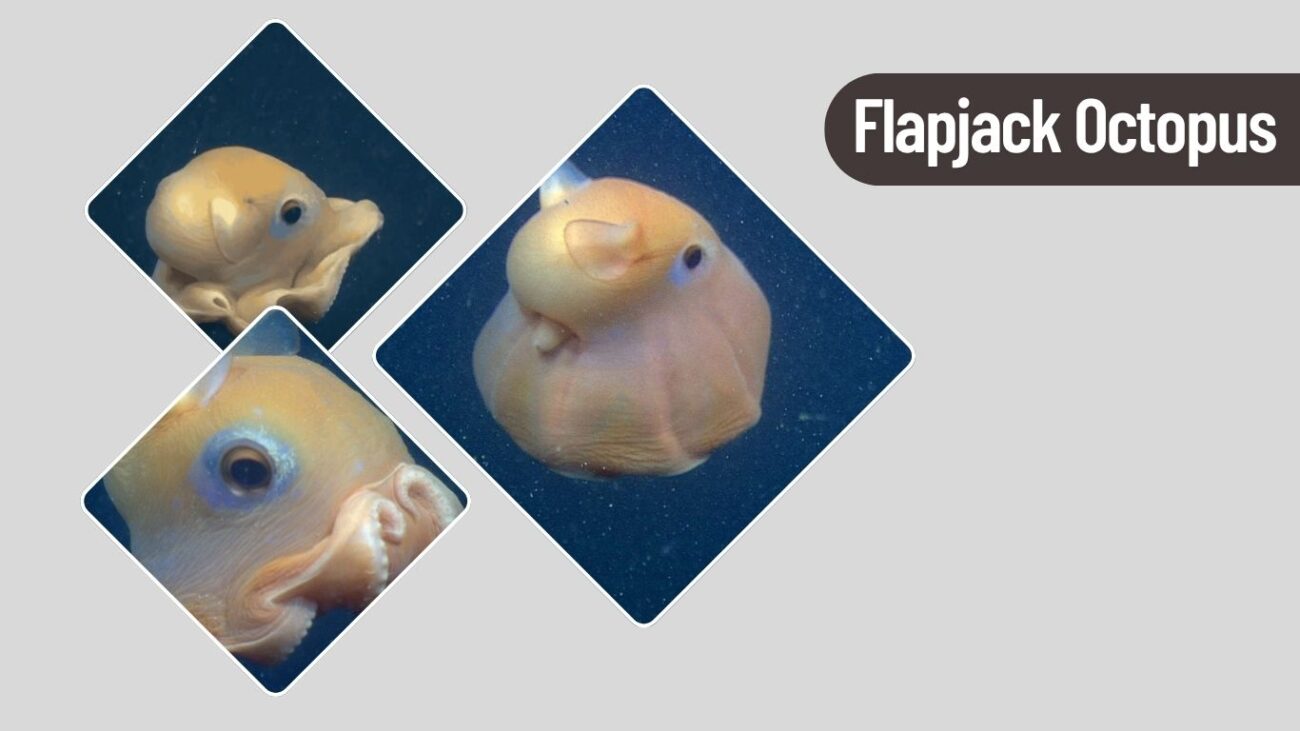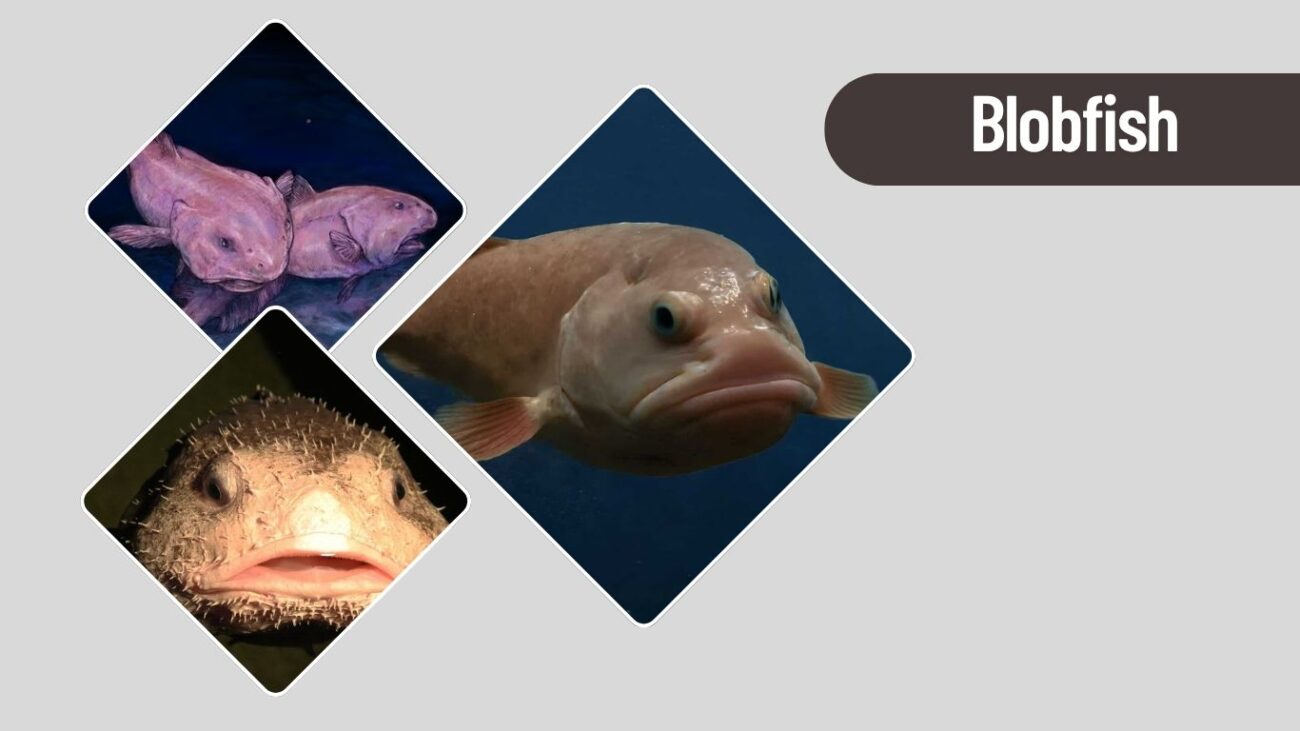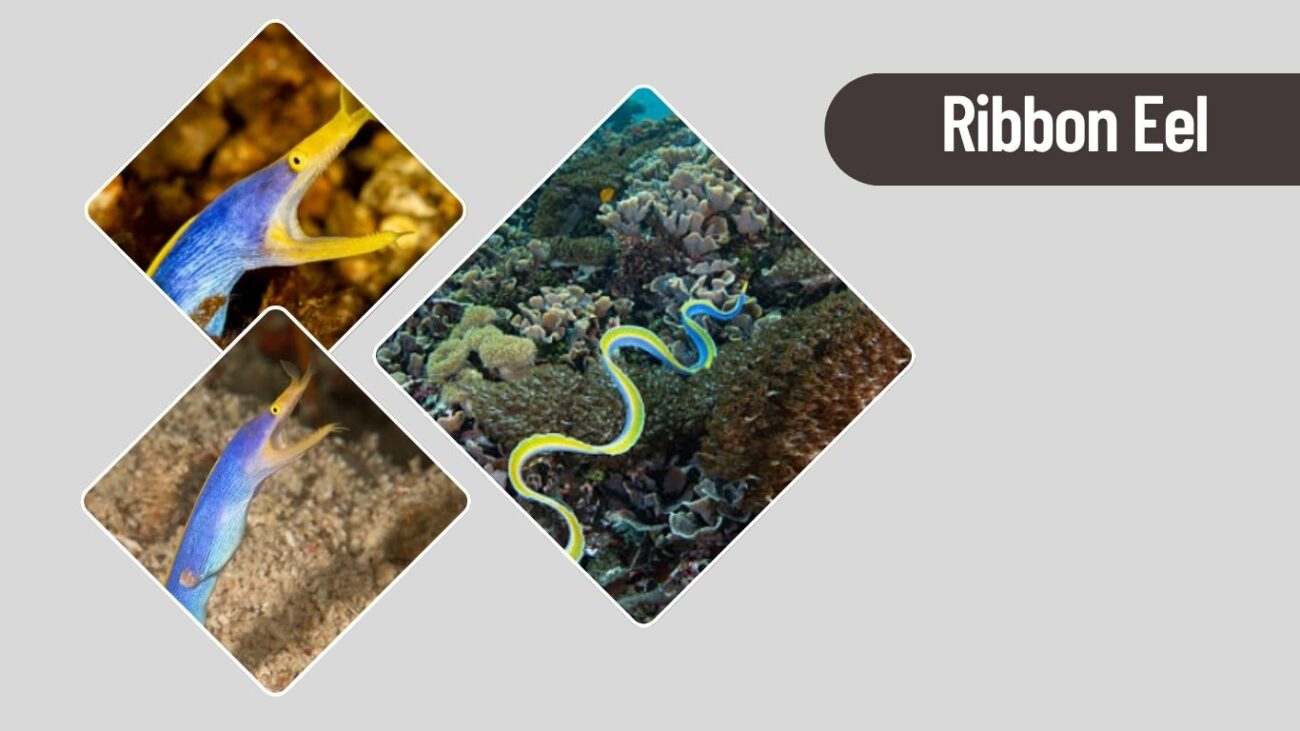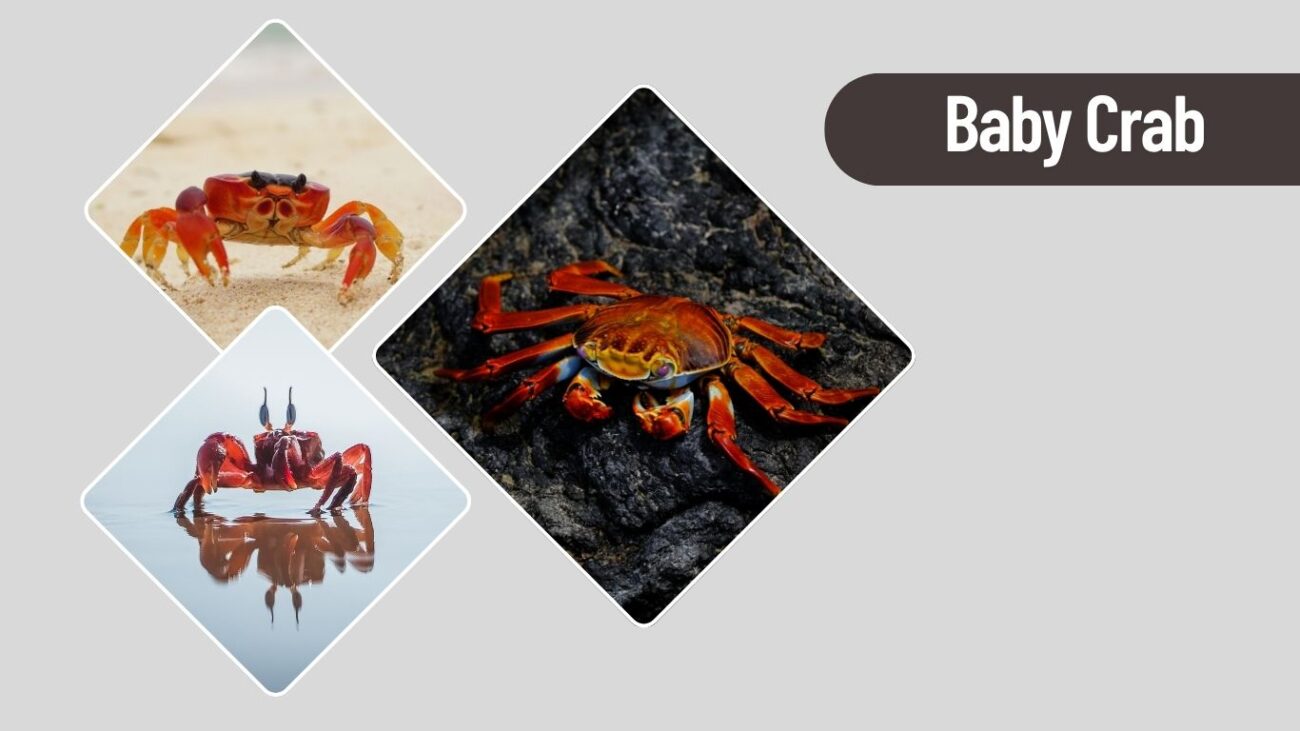The ocean is full of adorable and fascinating creatures, many of which are as cute as they are unique. From the playful sea otter to the tiny baby crab, these 23 sea animals stand out for their charming looks and endearing behaviors. Whether they glide through coral reefs or hide in the deep sea, these cute marine animals are sure to capture your heart.
1. Sea Otter
The sea otter is one of the most adorable and intelligent marine mammals, known for its playful behavior and charming appearance. These furry animals often float on their backs, cracking open shellfish with rocks, or holding hands with each other to stay close while drifting in the water.
Identification
- Dense, waterproof fur—the thickest of any animal
- Rounded face with short muzzle and small ears
- Brown to reddish-brown fur with lighter face and chest
- Webbed feet and strong tail for swimming
- Typically 3 to 5 feet long and weighs 50–100 pounds
Habitat and Range
Sea otters live in coastal waters of the North Pacific Ocean, especially along Alaska, British Columbia, and California. They prefer kelp forests and rocky shorelines where food is plentiful.
Behavior and Diet
Sea otters are famous for using tools—like rocks—to open clams, mussels, and sea urchins. They’re also social animals, often forming floating groups called rafts. Their playful nature and endearing habits make them one of the most beloved sea creatures.
2. Dolphin
Dolphins are among the most intelligent and playful marine animals. With their sleek bodies, friendly nature, and expressive faces, they’ve captured human admiration for centuries. Dolphins are known for their acrobatics, echolocation, and social bonding.
Identification
- Streamlined, torpedo-shaped body
- Smooth, rubbery skin—usually gray with lighter underside
- Prominent dorsal fin and beak-like snout
- Length ranges from 5 to 13 feet, depending on the species
- Travel in social groups called pods
Habitat and Range
Dolphins are found in oceans worldwide, from shallow coastal areas to the open sea, especially in warm and temperate waters. Some species also live in rivers.
Behavior and Intelligence
They use echolocation to hunt and navigate, and often communicate through clicks and whistles. Dolphins are curious, often approaching boats, and display strong mother-calf bonds and playful group behavior.
3. Clownfish
Clownfish are small, brightly colored fish best known for their orange bodies with white stripes and their unique relationship with sea anemones. Made famous by the movie Finding Nemo, they’re a favorite in aquariums and coral reefs.
Identification
- Orange body with three white vertical stripes bordered by black
- Rounded fins and expressive eyes
- Grows up to 4 inches long
- Smooth, scaled body with small dorsal spines
- Bright and bold coloration as a defense signal
Habitat and Range
Clownfish live in warm waters of the Pacific and Indian Oceans, particularly in shallow coral reefs. They’re almost always found within sea anemones, which provide protection and shelter.
Unique Traits
Clownfish have a mutualistic relationship with sea anemones—immune to their stings, they gain protection while offering food scraps to the anemone. They can also change sex, with the dominant male becoming female if the matriarch dies.
4. Pufferfish
Pufferfish, also known as blowfish, are cute yet curious sea creatures known for their ability to puff up into a ball when threatened. Their big eyes, small mouths, and round bodies give them a charming, cartoon-like appearance.
Identification
- Rounded body with short fins and tail
- Big, expressive eyes and tiny mouth
- Covered in spines or rough skin (depending on species)
- Inflates by sucking in water or air when in danger
- Typically 1 to 2 feet long
Habitat and Range
Pufferfish are found in warm, shallow coastal waters of the Pacific, Indian, and Atlantic Oceans. Some species also live in brackish and freshwater environments.
Defense and Diet
Their puffing behavior deters predators, and many species contain tetrodotoxin, a potent toxin. Pufferfish feed on algae, invertebrates, and crustaceans, using their beak-like teeth to crush shells.
5. Beluga Whale
The beluga whale, often called the “canary of the sea,” is a small, white whale known for its friendly face and vocal sounds. Its rounded forehead and gentle behavior make it one of the most beloved arctic marine animals.
Identification
- Bright white body with no dorsal fin
- Rounded “melon” head used for echolocation
- Grows 13 to 20 feet long and weighs up to 3,000 pounds
- Flexible neck allows head movement
- Social and highly vocal species
Habitat and Range
Beluga whales live in cold Arctic and sub-Arctic waters, often near coastal bays, estuaries, and shallow seas. Countries like Canada, Russia, and Greenland are common habitats.
Social Life and Sound
Belugas live in pods and use clicks, whistles, and chirps to communicate. They’re playful, curious around humans, and known to mimic sounds—a sign of high intelligence.
6. Sea Turtle
Sea turtles are graceful and gentle marine reptiles known for their smooth swimming, round eyes, and peaceful nature. Their hatchlings are especially adorable, making them a favorite among sea lovers.
Identification
- Streamlined, hard shell (carapace)
- Paddle-like flippers for swimming
- Varies in color: green, brown, or olive depending on species
- Hatchlings are about 2 inches; adults can grow over 4 feet long
- No teeth—have sharp beaks instead
Habitat and Range
Sea turtles live in tropical and subtropical oceans around the world. They are often found in shallow seagrass beds, coral reefs, and sandy beaches where they come ashore to lay eggs.
Behavior and Conservation
Sea turtles are migratory, often traveling thousands of miles. They feed on jellyfish, algae, or seagrass depending on the species. All sea turtle species are threatened or endangered due to pollution, poaching, and habitat loss.
7. Seahorse
Seahorses are tiny, upright-swimming fish with horse-like heads and curled tails. Their delicate features and gentle nature make them one of the cutest and most unusual sea animals.
Identification
- Small, elongated body with bony plates
- Curved neck and tubular snout
- Prehensile tail for grasping objects
- Tiny dorsal fin flutters for propulsion
- Ranges from ½ inch to 14 inches long
Habitat and Range
Found in shallow coastal waters, especially seagrass beds, mangroves, and coral reefs of the Atlantic, Pacific, and Indian Oceans.
Unique Features
Male seahorses carry and give birth to babies in a pouch, a rare trait in the animal kingdom. They use camouflage and slow movement to blend in with surroundings and avoid predators.
8. Dumbo Octopus
The Dumbo octopus is a deep-sea creature named for its ear-like fins that resemble Disney’s Dumbo. With its round body, big eyes, and fluttering fins, it’s considered one of the cutest creatures of the deep ocean.
Identification
- Gelatinous, umbrella-like body
- Large fins on the sides of the head resembling ears
- Tiny arms connected by webbing
- Usually pale white, pink, or light purple
- Grows up to 8 to 12 inches long
Habitat and Range
Found in the deepest parts of the ocean, at depths of 10,000 to 13,000 feet, including the Atlantic and Pacific Oceans. Lives on or just above the seafloor.
Behavior and Movement
Uses its fins to “fly” through the water and feeds on worms and small crustaceans. Its slow, drifting movement and squishy appearance give it a charming, cartoon-like look.
9. Starfish
Starfish, or sea stars, are simple but beautiful marine animals known for their five arms, bright colors, and symmetrical appearance. Their calm movements and soft textures make them visually delightful.
Identification
- Radial symmetry with typically 5 arms (some have more)
- Variety of colors: orange, red, blue, purple, and more
- Tube feet underneath arms for movement and feeding
- Rough or spiny skin depending on species
- Size ranges from a few inches to over 2 feet
Habitat and Range
Found in oceans worldwide, from shallow tidal pools to deep seafloors. Often seen in coral reefs, rocky shores, and sandy bottoms.
Behavior and Regeneration
Feeds on mollusks by pushing its stomach outside its body to digest prey. Starfish can regrow lost arms, and in some species, a single arm can regrow an entire body.
10. Blue Tang
The Blue Tang is a vibrant, reef-dwelling fish known for its dazzling blue color and yellow tail. Made famous by the character “Dory” in Finding Nemo, it’s a favorite among aquarium enthusiasts and ocean lovers.
Identification
- Bright blue body with a yellow, paddle-shaped tail
- Oval, flat body with black markings along the sides
- Grows up to 10–12 inches in length
- Small mouth and pointed snout
- Sharp spines near the tail for defense
Habitat and Range
Found in coral reefs of the Indo-Pacific region, including the Great Barrier Reef, Indian Ocean, and parts of the Pacific Islands.
Behavior and Role
Feeds on algae, helping keep coral reefs clean. Blue tangs are social and often swim in small schools. Their striking colors and gentle demeanor make them one of the most beloved reef fish.
11. Harbor Seal
Harbor seals are plump, spotted marine mammals with large, soulful eyes and a sweet, sleepy look. Their puppy-like face and gentle nature make them incredibly cute and photogenic.
Identification
- Rounded body with short flippers
- Large, dark eyes and whiskered snout
- Spotted gray, silver, or brown fur
- Grows 4 to 6 feet in length and weighs 150–300 pounds
- No external ears, unlike sea lions
Habitat and Range
Inhabit coastal waters of the Northern Hemisphere, including North America, Europe, and parts of Asia. Often found resting on rocky shores, beaches, and sandbanks.
Behavior and Lifestyle
Harbor seals are shy and quiet, spending much of their time lounging on land and swimming gracefully in the sea. They feed on fish and crustaceans and give birth to adorable, fluffy pups.
12. Axolotl
Though technically a freshwater animal, the axolotl is often included in lists of aquatic cuties due to its wide smile and feathery gills. This “walking fish” is actually an amphibian, known for its adorable face and incredible regenerative abilities.
Identification
- Slender body with four limbs and a long tail
- External, feathery gills that look like pink fronds
- Wide, expressive mouth giving a constant “smile”
- Colors vary: white, pink, brown, black, or golden
- Grows 6 to 12 inches long
Habitat and Range
Native only to lake systems around Mexico City, especially Lake Xochimilco. It lives in cool, freshwater environments with low currents.
Unique Features
Axolotls retain their larval features throughout life—a condition called neoteny. They can regrow entire limbs, eyes, even parts of their brain, making them a focus of medical research.
13. Manatee
Manatees, often called “sea cows,” are large, gentle marine mammals known for their slow movements, wrinkled faces, and sweet eyes. Their calm demeanor and chubby shape make them undeniably cute.
Identification
- Round, paddle-shaped tail
- Thick, gray body with sparse hairs
- Large, flexible upper lip used to grab food
- Weighs up to 1,300 pounds and grows up to 13 feet
- Small eyes and no visible ears
Habitat and Range
Found in warm coastal waters and rivers, especially around Florida, the Caribbean, West Africa, and the Amazon Basin.
Behavior and Personality
Manatees are herbivores, grazing on seagrass and aquatic plants. They are peaceful, slow swimmers that often float near the surface, sometimes lifting their noses to breathe. Their docile nature makes them a symbol of ocean conservation.
14. Nudibranch
Nudibranchs are tiny, soft-bodied sea slugs known for their stunning colors, frilly shapes, and almost otherworldly appearance. Despite their small size, they’re among the most eye-catching and charming creatures in the sea.
Identification
- Small, elongated body with vibrant colors and patterns
- Two horn-like rhinophores on the head for sensing
- Frilly gills or appendages on the back
- Usually 0.5 to 4 inches long
- No shell in adult stage
Habitat and Range
Found in oceans worldwide, from shallow coral reefs to deep-sea habitats. Especially abundant in tropical waters like the Indo-Pacific.
Behavior and Beauty
Feeds on sponges, hydroids, and even other nudibranchs. Some species absorb toxins or stinging cells from their prey for defense. Their dazzling appearance makes them favorites among underwater photographers.
15. Baby Shark
Baby sharks, often called “pups,” are miniature versions of their adult counterparts—and surprisingly adorable. With their large eyes and small, smooth bodies, shark pups are fascinating and cute at the same time.
Identification
- Small body (6 inches to 3 feet depending on species)
- Large eyes and rounded snout
- Smooth, soft skin at birth
- Fully formed teeth and fins
- Independent from birth—no parental care
Habitat and Birth
Shark pups are born in shallow waters, estuaries, or open seas depending on species. Some are born live (viviparous), while others hatch from egg cases, often called “mermaid’s purses.”
Behavior and Growth
Even as babies, sharks are active hunters, preying on small fish and crustaceans. They are fast learners, and their small size and curiosity make them both fascinating and photogenic.
16. Fairy Wrasse
The Fairy Wrasse is a small, dazzling reef fish known for its rainbow-like colors and graceful swimming. Males, in particular, display stunning color changes during courtship, making them one of the prettiest and cutest fish in the sea.
Identification
- Slender body with iridescent colors: pink, orange, blue, green, or purple
- Long, flowing fins and a slightly upturned mouth
- Typically 3 to 5 inches long
- Males are more colorful than females
- Quick and agile swimmers
Habitat and Range
Found in coral reefs of the Indo-Pacific, especially around Indonesia, Fiji, and the Great Barrier Reef. Prefers shallow to mid-depth reef zones.
Behavior and Appeal
Fairy wrasses are peaceful and social, often seen darting around reef crevices. Their bright colors, small size, and graceful movements make them popular in aquariums and beloved by divers.
17. Leafy Sea Dragon
The Leafy Sea Dragon is a mesmerizing marine fish that resembles a floating piece of seaweed. With its leafy appendages and slow, graceful movement, it’s one of the ocean’s most enchanting and cute creatures.
Identification
- Long, thin body covered in leaf-like extensions
- Greenish-yellow color with brown or orange accents
- Grows up to 14 inches long
- Small, tube-like mouth for sucking up tiny prey
- Master of camouflage
Habitat and Range
Endemic to southern and western Australian coastal waters, especially in kelp forests and seagrass beds.
Behavior and Rarity
Closely related to seahorses, leafy sea dragons drift with the current and rely on camouflage for protection. Males carry eggs on their tail until hatching. Their delicate, fairy-tale appearance makes them a favorite among underwater wildlife fans.
18. Flapjack Octopus
The Flapjack Octopus is a deep-sea cutie with a squishy, rounded body and short arms that give it a pancake-like appearance. Its cartoonish face and gentle drifting movement make it irresistibly charming.
Identification
- Flattened, umbrella-shaped body
- Soft, gelatinous skin in shades of pink or reddish-orange
- Short, webbed arms giving it a flappy look
- Grows up to 8 inches long
- Big eyes set close together
Habitat and Range
Lives in the deep Pacific Ocean, especially off the coast of California and Japan, at depths of 1,500 to 3,000 feet.
Behavior and Movement
The Flapjack Octopus floats and pulses gently through the water rather than jetting like most octopuses. It’s a rare sight in the wild, and its slow, relaxed nature adds to its cute and cuddly reputation.
19. Porcupinefish
Porcupinefish are spiny, round-bodied fish that puff up when threatened, resembling a swimming balloon. Their large eyes and shy expressions make them surprisingly cute despite their prickly defense.
Identification
- Rounded body with sharp spines covering the skin
- Large, cartoon-like eyes and small pouting mouth
- Inflates body when threatened
- Typically 1 to 2 feet long
- Often has spotted or mottled coloring
Habitat and Range
Found in tropical and subtropical oceans worldwide, especially near coral reefs, lagoons, and rocky seabeds.
Defense and Behavior
When scared, porcupinefish inhale water or air to puff up, causing their spines to stick out. Despite their defenses, they’re slow-moving and often shy, making them favorites among divers and photographers.
20. Sand Dollar
Sand dollars are flat, disc-shaped echinoderms that resemble large, white coins. With their delicate patterns and gentle presence on sandy seafloors, they’re often considered one of the cutest and most calming sea creatures.
Identification
- Flat, round body with star-shaped pattern on top
- Covered in fine, velvet-like spines when alive
- Typically white, tan, or gray in color
- Grows about 2 to 4 inches across
- Belongs to the same group as sea urchins and starfish
Habitat and Range
Found in shallow coastal waters on sandy or muddy seabeds, especially in North and South America, Australia, and Asia.
Behavior and Movement
Sand dollars move slowly using tiny spines underneath their bodies. They burrow into sand to hide from predators and feed on plankton and organic particles. Their gentle movement and symmetry make them popular beach discoveries.
21. Blobfish (Deep Sea Form)
The Blobfish is often misunderstood due to its appearance outside its natural habitat. In the deep sea, it looks like a normal, soft-bodied fish—but photos taken after decompression have made it famous (and oddly adorable) for its “melty” face.
Identification
- Soft, gelatinous body that maintains shape under deep pressure
- Flattened head with drooping mouth and nose-like front
- Pinkish-gray coloration
- Grows up to 12 inches long
- Lacks muscle—floats above the seafloor
Habitat and Range
Lives in deep waters off the coasts of Australia, Tasmania, and New Zealand, at depths between 2,000 to 4,000 feet.
Behavior and Reputation
Blobfish simply drift near the seabed, feeding on small crustaceans. While not cute in a traditional sense, its droopy, slow-moving appearance and internet fame have made it a quirky symbol of deep-sea cuteness.
22. Ribbon Eel
The Ribbon Eel is a slender, snake-like fish known for its vivid colors and elegant, flowing form. Its ribbon-like body and expressive mouth give it a striking and surprisingly cute appearance.
Identification
- Long, thin body with ribbon-like movement
- Juveniles are black with a yellow stripe; adults turn electric blue with yellow accents
- Can grow up to 3 feet long
- Flared nostrils and wide, expressive mouth
- Lives in burrows with just the head peeking out
Habitat and Range
Found in Indo-Pacific coral reefs, especially in lagoon edges and sandy reef slopes. Common around Indonesia, the Philippines, and Papua New Guinea.
Behavior and Color Change
Ribbon eels are shy and usually stay hidden in their burrows. Fascinatingly, they change color and even sex as they age—juveniles are male and can become female as adults. Their flowing motion and bright colors make them reef favorites.
23. Baby Crab
Baby crabs, also called crab larvae or juveniles, are tiny and delicate versions of adult crabs. With their tiny claws, round eyes, and awkward crawling, they’re irresistibly cute, especially when they scuttle over sandy shores.
Identification
- Miniature body with soft exoskeleton
- Small claws and round, shiny black eyes
- Pale to translucent color at early stages
- Just a few millimeters wide at hatching
- Resembles a miniature adult crab after metamorphosis
Habitat and Life Cycle
Baby crabs begin life as planktonic larvae, drifting in ocean currents before settling on the seafloor or tidal flats. Common worldwide, especially along coastal beaches and mangroves.
Behavior and Growth
As they grow, baby crabs molt several times before developing a hardened shell. They are curious, fast movers, and often hide under small rocks or shells, making beachgoers smile with their tiny, scuttling charm.

